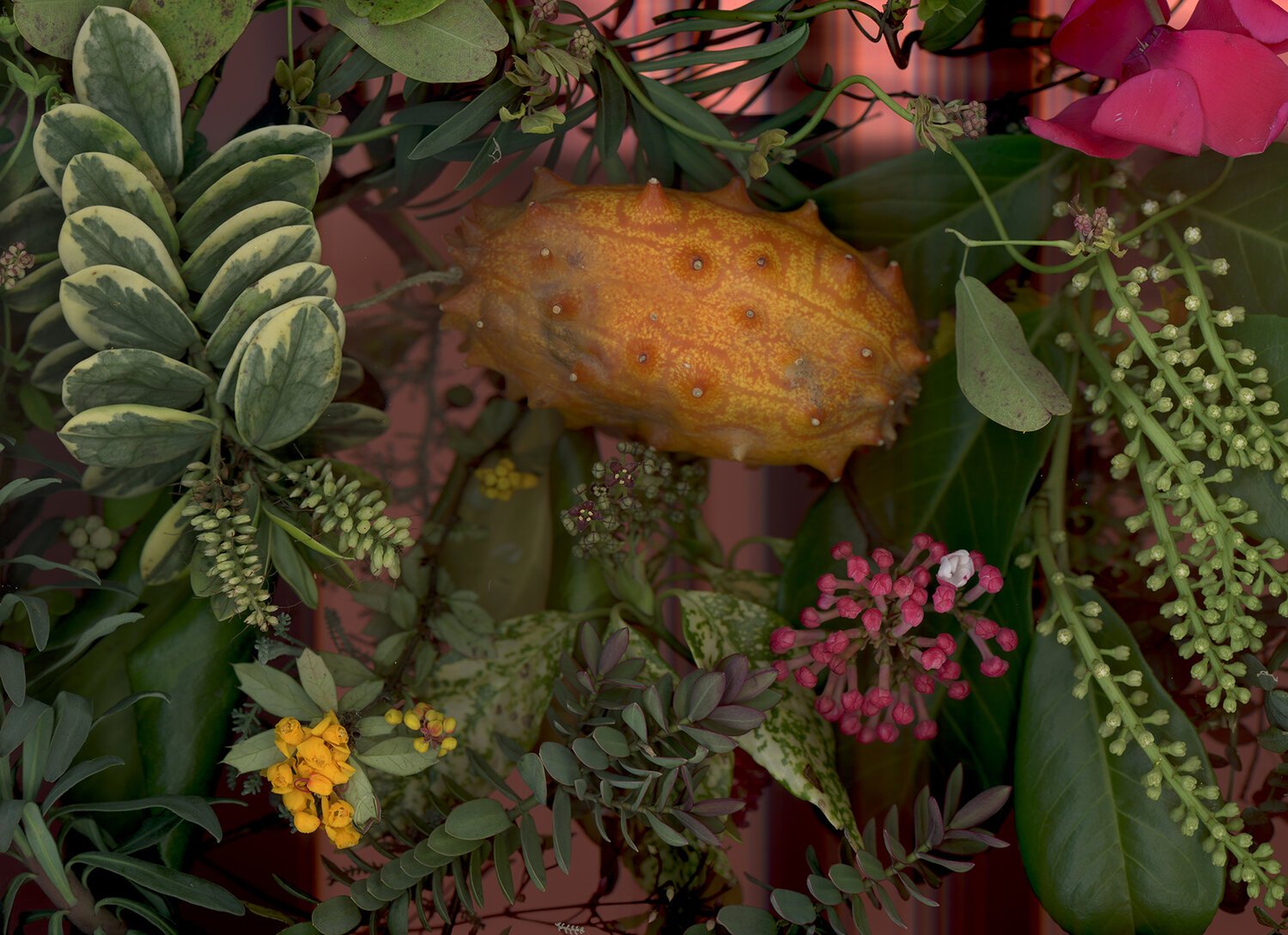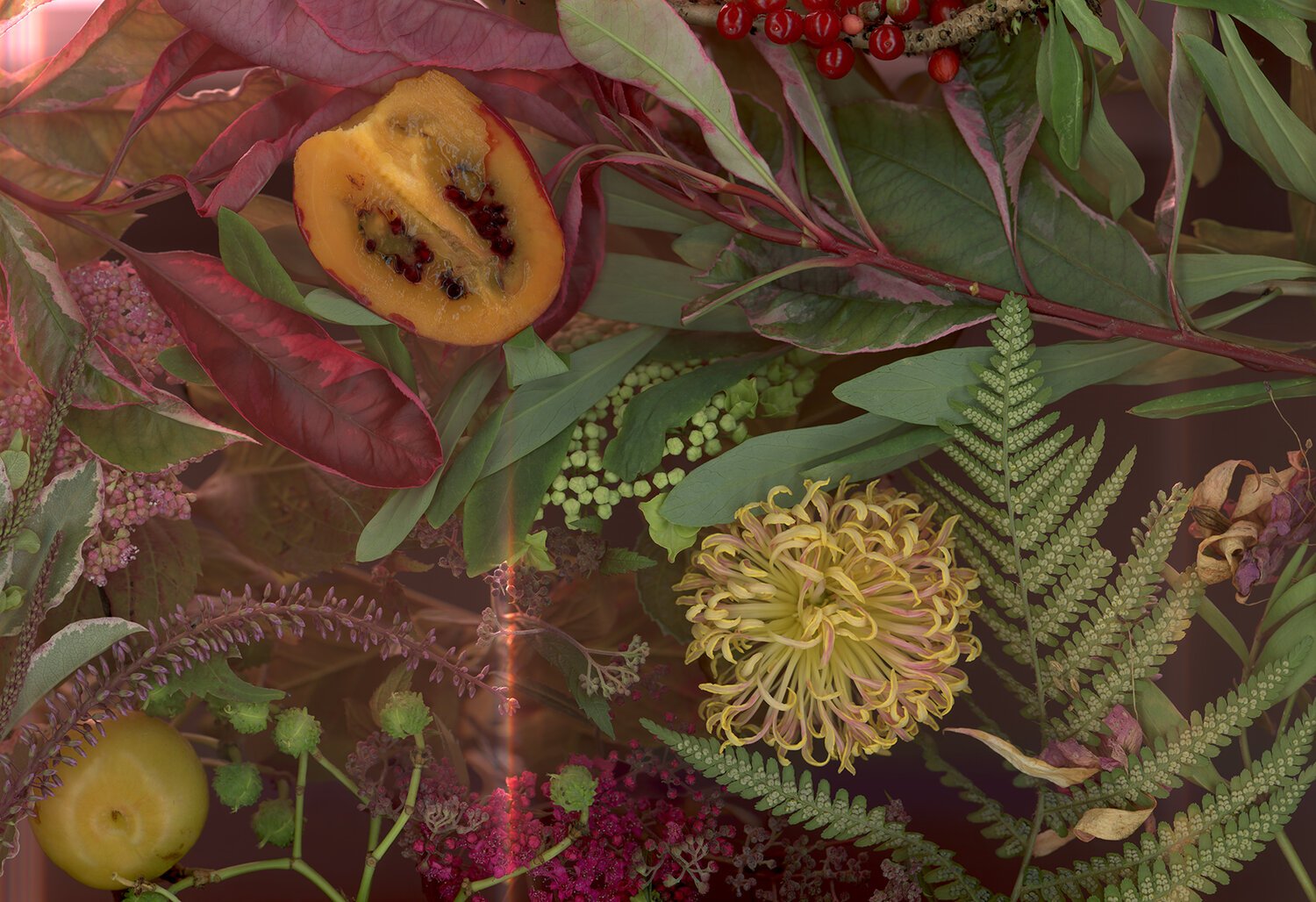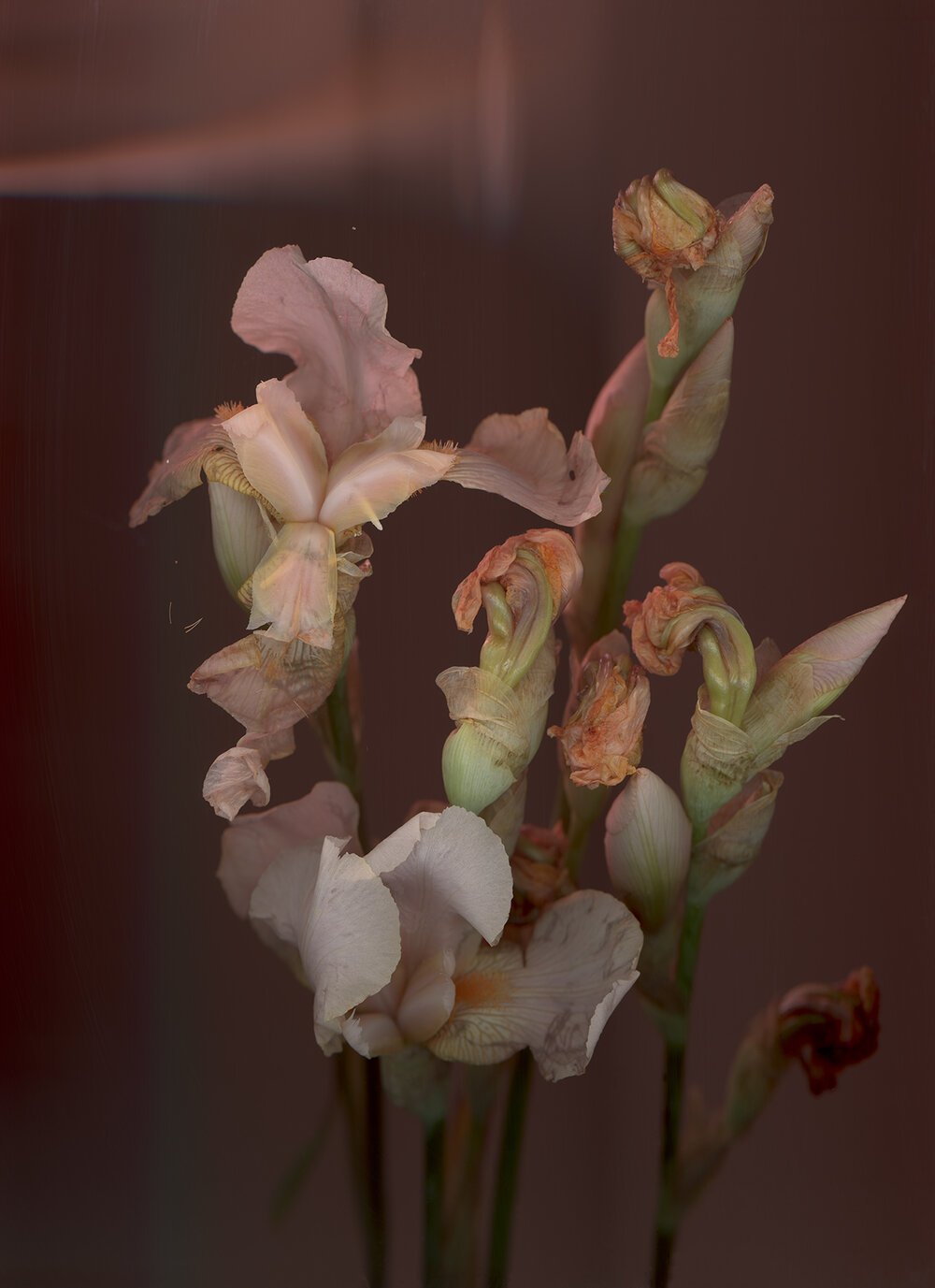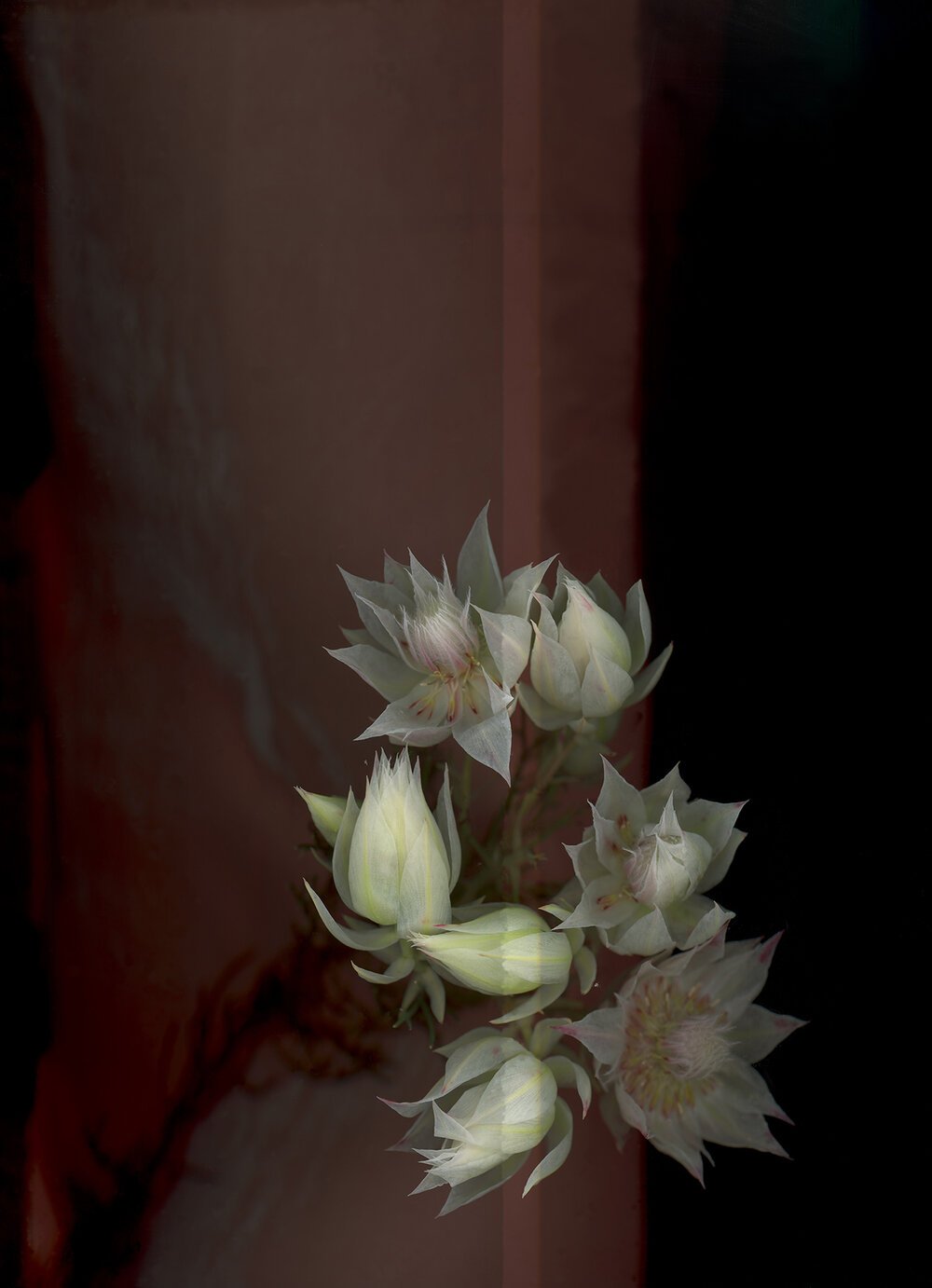Anna Skladmann: Scanning Nature
June 5th, 2020
Inspired by the natural world and man’s place within it, Anna Skladmann uses technological means to showcase ecology and myth-making. Public Offerings Ltd. spoke to the award-winning artist about what drives her unique photographic style and the messaging behind it.
POL: Can you tell us a little about your background and what drew you to photography as an art form?
AS: When I was little I would collect obsessively: dead bees or insects were drying in my books; boxes of labelled and dated candy wrappers that would remind me of the pleasures I had when eating or sharing them with others; obscene objects I would pick up, collect, label and archive. I felt I had to collect absolutely everything so my memories existed in a physical realm and wouldn't disappear into the abyss. When I was eight and got my first camera it felt like such a release and I could finally hold on to my memories.
POL: On the one hand your floral photography reads as still life, but on the other they hand, they are very constructed and multilayered images. How would you describe your recent work?
AS: I try to draw my inspiration from a world that moves in between a psychological state, where the alchemy of the self transpires beneath our immediate awareness. I find certain motives reflected back in nature which I collect and combine with symbols, histories and myths to create an alternative female-focused narrative rooted in the natural world.
A recent project, The Genesis Of Blame - A Natural History Of The Forbidden Fruit, captures leaves, flowers and tropical fruits. Each fruit offers an alternative to the familiar forbidden apple known from the story of Adam and Eve, hinting at the limits of taxonomy in a constantly evolving world. Although all the fruits are edible, many of the other plants in the images are not; the images are simultaneously seductive and poisonous in appearance, suggesting contradictory responses to desire.
POL: Your technique is very unique, including liquid submersion and scanning to create your imagery. How do you build your images and what inspired this direction?
AS: This technique of mixing different natural liquids such as water or milk with submerged flowers might at first seem surprising: however using the qualities of high definition scanning and submersion liquid is a hint to a return to old methods of photographic print making. It is inspired by the pioneer of photography Anna Atkins. She placed her scientific study of British algae directly on to photo sensitive paper, producing prints multiple times continuously as the plants perished. In so doing, Atkins presented what will forever be missing in the photograph - time and change. In a sense, I do the opposite with the scanner, but still look to her work by using the ingredients of artificial light, liquids and natural findings.
POL: By using technological means to capture floral and natural imagery, your work can be read as an ecological statement. How do your politics interact with your creative output?
AS: The scanner is known as an apparatus that is looking for threads, we scan our bodies for possible diseases or malalignment, we scan in security for attacks and threads, we scan the land with drones looking for borders being controlled. The scanner is a military invention, it's not programmed to see the beauty of nature. Yet understanding the political consequences of the technique, along and against the creation of the work of art, plays in an important role in my work. The scanner offers a close up perspective with no distance, separating the object from the light through a sheet of glass. The object is touching the glass and all detailed inscriptions are read and translated into pixels, like the clear view appearing in a magnifying glass. What happens when you look at nature closely enough? Does it shift your perception? Do you see your own nature more closely?
POL: The titles of your pieces often reference elements of religious story, myths and legends, what draws you to these narratives and using them in your work?
AS: I think it has a lot to do with my upbringing, I was raised on story-telling: I was born and grew up in the North of Germany as a child of Russian Jewish immigrants whose lives are a combination of making sense of the past in their current surrounding. We grew up in a rural city mainly in nature, but instead of having a romantic notion of it, the stories carried on in my head while going on walks or playing outside, stories that were passed over generations and somehow I could never separate the two. It taught me about the dualities of nature from an early age.
POL: Your floral work is very different from your earlier series Little Adults, in which you took portraits of the children of Russia’s new super-rich. What promoted this change in direction? And what connections can be found across all your photography?
AS: The big change happened throughout my Masters at Royal College of Art. I was working as a social-documentary photographer in Russia for over 4 years. In this time I travelled all over the country and reported for different international newspapers as well as working on my Little Adults series. By the end of my time there, the stories became more political and I felt I was turning more to the medium than the message.
When I started my Masters at the Royal College of Art we were pushed to start a new medium or radically change something in our practice, and so I took a break from portraits and slowly moved into the natural world. The connection that remains though is my love for story-telling and I have found new ways to express that. My practice is a critical observation on aspects of contemporary life and politics exploring notions of nature and society, cultivation and the machine.
“Although all the fruits are edible, many of the other plants in the images are not; the images are simultaneously seductive and poisonous in appearance, suggesting contradictory responses to desire.”
POL: What’s next for you? What are you working on right now?
AS: I have just spend over two and half months in lockdown in my hometown in Germany which I left when I was a teenager. I have spent my days in nature and have been spending a lot of time with my family and grand-mother who has dementia. Her memory is so sharp when we time travel into the past but she has trouble remembering if she ate her lunch. I'm currently fascinated by how the memory works and how different emotions, pictures or senses can trigger them. I had some exciting shows planned this year, so I'm waiting for the postponed timeframes to be announced.
About Anna Skladmann
Anna Skladmann’s (b. 1986, Bremen, Germany) artistic medium combines photography and scanning techniques to reflect critically on aspects of contemporary life and politics exploring notions of nature and society, cultivation and the machine. She is interested in the archive and categories produced and re-produced as well as being embedded in literature and mythology.
Having received her MA from the Royal College of Art and her BA from Parsons School Of Design, her work has since been nominated for the Prix Pictet and Paul Huf Award, and has also won the Arles Photo Folio Prize. Skladmann published her first monograph in 2011 and her photographic projects have been shown in exhibitions and festivals, including the Maison Européenne de la Photographie in Paris, Museum of Modern Art in Moscow, Fotofest International in Houston, Unseen Photo Fair in Amsterdam and the Museum für Kunst und Gewerbe in Hamburg.
Permanent Collections include The Maramotti Collection, The Museum Of Fine Arts Houston, The Moscow Museum of Modern Art, Stiftung für die Hamburger Kunstsammlung and The Pinault Collection.



















